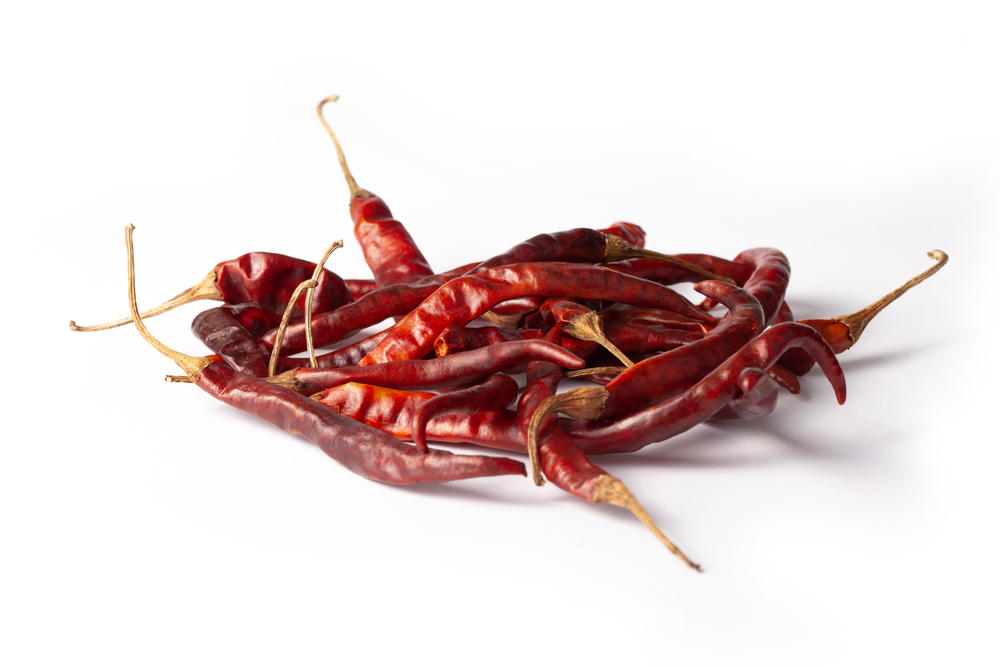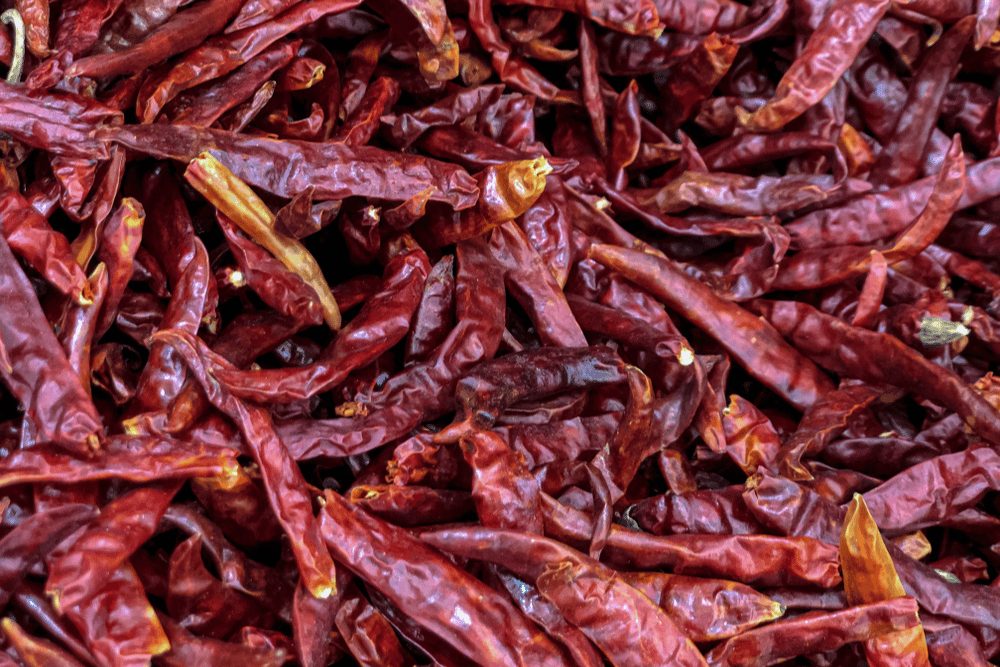Japones peppers, or Japanese peppers, are medium to high-heat peppers commonly used in Japanese and Chinese cuisine. They're favored because they add spice without disrupting the complex umami flavors associated with Asian dishes.
What Are Japones Peppers?
Although called Japones peppers -Japones being the Spanish word for Japanese – this species of Capsicum annuum is native to central Mexico, particularly Jalisco. Explorers introduced them to Asia during the 15th and 16th centuries, quickly incorporating them into regional cooking.
Japones peppers are reddish-brown and bear a resemblance to chile de arbol. They’re often referred to as “fire bringers” because the heat they impart doesn’t change the flavor profile of the dishes to which they’re added.
These red chilis are typically dried and feature heavily in Thai, Hunan, and Caribbean recipes.

Other Names For Chile Japones
If Japones peppers don’t ring a bell, one of their aliases might. These hot peppers are also known as:
- Santaka
- Hontaka
- Japanese pepper
- Oriental chili pepper
How Spicy Are Japones Peppers?
Japones peppers aren’t the spiciest, but they bring some heat to the party. According to the Scoville heat scale, Japones measure 15,000-30,000 Scoville heat units (SHU).
For reference, here is how hot some more commonly known peppers are”:
- Thai red chili, 50,000-100,000 SHU
- Cayenne pepper, 30,000-50,000 SHU
- Japones pepper, 15,000-30,000 SHU
- Serrano pepper 6,000-23,000 SHU
- Jalapeno pepper 2,500-8,000 SHU
Japones Peppers Vs. Chile De Arbols Vs. Guajillo Chile Vs. Tien Tsin
Japones peppers are often mistaken for or used interchangeably with some of their close cousins. While peppers can be swapped out in recipes depending on what you want or have handy, it’s essential to recognize that they all have unique attributes.
The list below shows the peppers most similar to Japones and where they’re similar and different.
| Japones Pepper | Chili de Arbol | Guajillo Chili | Tien Tsin |
| South America | Mexico | Mexico | China |
| Red-brown | Bright red | Brown | Red |
| 2-3″ | 2-3″ | 3-5″ | 1-2″ |
| 15,000-30,000 SHUs | 15,000-30,000 SHUs | 2,500-5,000 SHUs | 50,000-75,000 SHUs |
| Peppery | Smoky | Fruity | Sweet & Peppery |
| Asian, Latin | Latin, Mexican | Latin, Mexican, Tex-Mex | Asian |
How Do You Cook With Japones?
Japones peppers don’t have a complex or nuanced flavor profile. They tend to be neutral and peppery. This simplicity makes Japones extraordinarily versatile and a useful way to add heat to many dishes without disrupting the balance of flavors.
Dried Japones chiles are routinely used in:
- Stir-fries
- Chutneys
- Asian marinades and sauces
- Infused into vodka or oil
These spicy red peppers can also be ground into a fine powder and used as a seasoning or condiment at the table.
Where To Buy Japones Peppers
Packages of dried Japones peppers can sometimes be found in the Mexican food aisle in local grocers, but don’t count on it. They’re more easily located in Latin American markets and Asian markets.
Because they’re dried before use, they can be ordered online from many retailers.
Fresh Japones chiles aren’t typically used and, therefore, much more challenging to locate.
Can You Grow Japones?
The easiest way to have Japones on hand is to grow them yourself.
Japones pepper plants enjoy similar growing conditions as most other chilis. They like:
- Full sun
- Warm temperatures
- Well drained soil
- Plant in spring to have peppers throughout the summer
Seeds are easily found online and occasionally at local nurseries. Live starter plants can be more challenging to locate.
Once established, Japones pepper plants are prolific and will grow to approximately 2 feet tall. When planting, leave enough room, at least 18 inches, for the plants to spread and not be crowded against one another.
Japones pepper plants can also be grown effectively in containers.
Each pepper plant can produce hundreds of peppers in a growing season, so unless you use them daily, one plant may be enough.
Once harvested, the peppers can be dried and kept in an airtight container to prevent spoilage.
Substitutes For Japones Peppers
Several peppers bear some similarities to Japones peppers. This makes finding a suitable substitute relatively easy.
The most common substitute for Japones is chili de arbol. Arbols will add the right amount of heat, but they’ll also add a subtle fruity flavor to your dish.
You can use both cayenne and serrano peppers as well. But like the chili de arbol, they will change the flavor of your dish in at least a small way.
If you can handle the heat, the tien tsin pepper has a similar neutral flavor that won’t upset the dish’s balance. You’ll recognize the tien tsin pepper if you’ve ever had the popular Chinese dish, kung pao chicken. However, it is significantly spicier (50,000-75,000 SHUs), so a little can go a long way.

